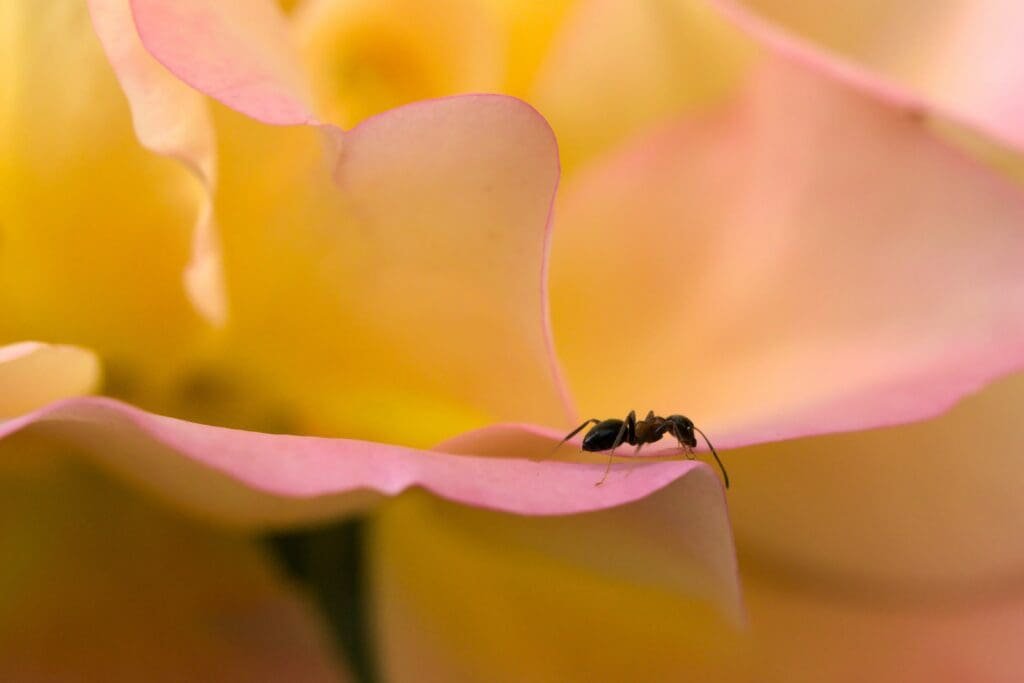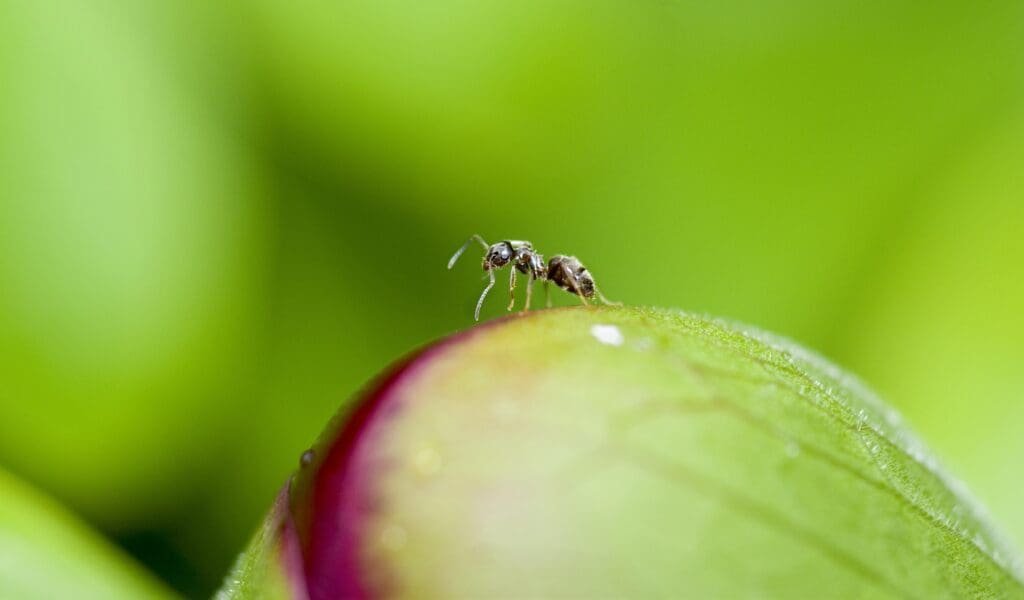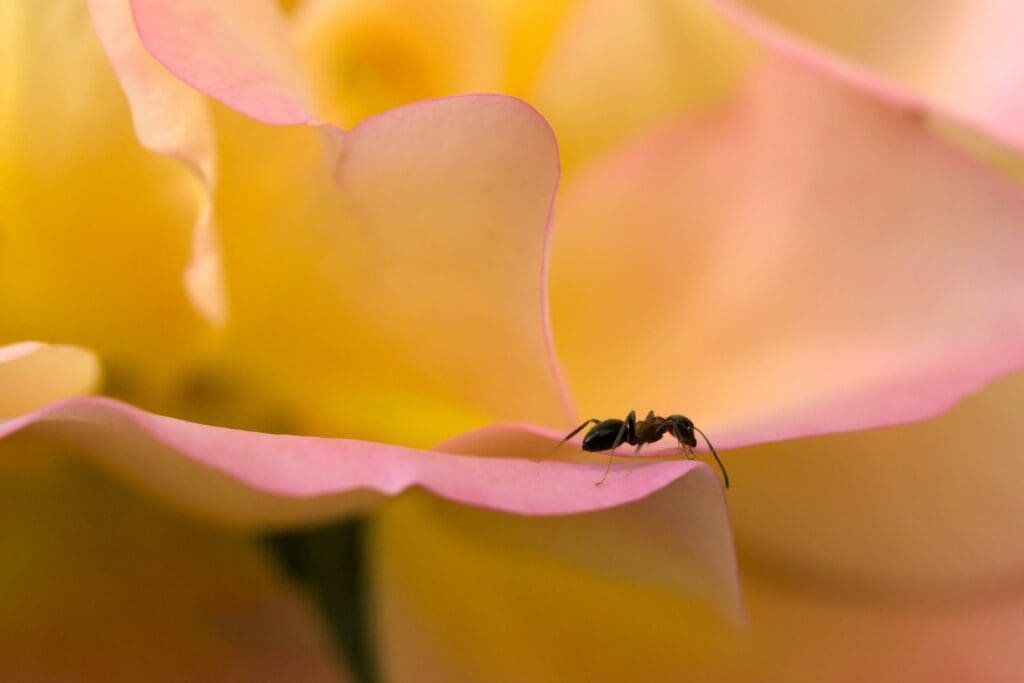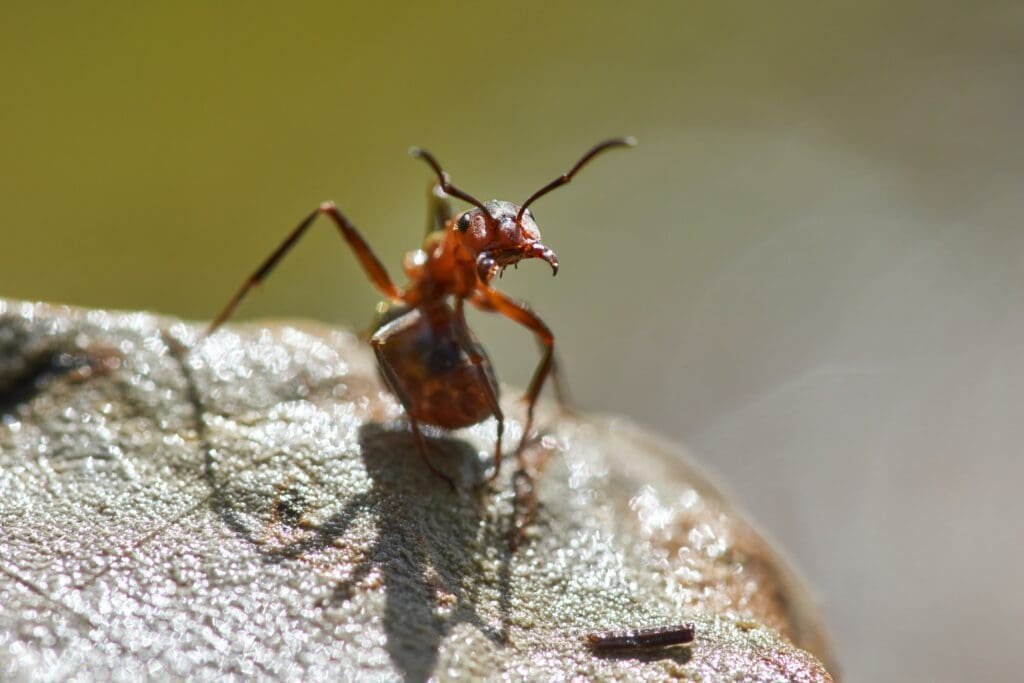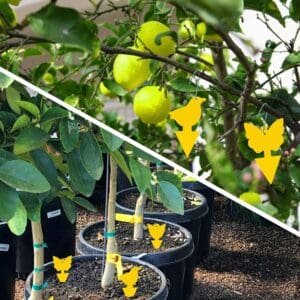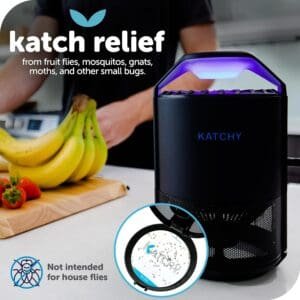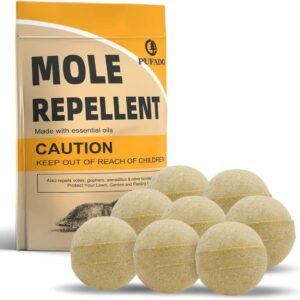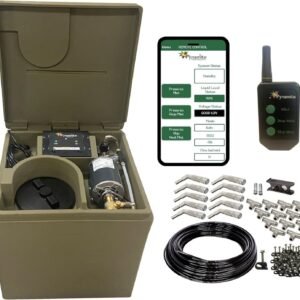How to locate Ant Nests in Your Yard!
How to locate Ant Nests in Your Yard! So, you’ve got some unwanted ant colonies invading your yard and you’re determined to locate their nests to put an end to their shenanigans. Well, you’ve come to the right place! In this article, we will explore some clever strategies that can help you track down those elusive ant nests lurking beneath the surface. From observing ant trails to utilizing homemade baits, get ready to take charge of your yard and bid farewell to those pesky invaders. Let’s get started!
Types of Ant Nests
Mound Nests
Mound nests are one of the most common types of ant nests found in yards. As the name suggests, these nests are characterized by large mounds of soil or dirt built by the ants. Mound nests are typically created by species such as fire ants and harvester ants. These nests can be easily identified due to their distinctive appearance and can range in size from a few inches to several feet in diameter.
Pavement Nests
Pavement nests, as the name implies, are found in cracks and crevices in pavement or concrete surfaces. Ants that create pavement nests, such as pavement ants, often enter homes or buildings through these cracks. They use the warmth provided by structures to establish their nests. Locating pavement nests can be a bit challenging since they are hidden within the infrastructure, but there are effective techniques to uncover them.
Carpenter Ant Nests
Carpenter ant nests are commonly found in wooden structures or trees. These ants excavate tunnels and galleries within the wood to create their nests. Unlike termites, carpenter ants do not consume wood; instead, they forge tunnels through it. Signs of carpenter ant nests include sawdust-like debris known as “frass” and the presence of winged ants emerging from the structure. It is important to identify and address carpenter ant nests promptly to prevent structural damage.
Underground Nests
Many ant species, such as black ants and Argentine ants, create underground nests. These nests can be found in the soil, often near trees, shrubs, or other plants. The entrances to these nests are usually small and inconspicuous, making them difficult to locate. Ants that build underground nests are known to forage long distances, so locating their nests can require some investigative work.
Nest in Debris
Ants can also establish nests in debris, such as piles of leaves, twigs, or grass clippings. These nests provide ants with shelter and protection. If you have accumulated debris in your yard, especially in areas where ants are commonly seen, it is worth checking for ant nests. Clearing away the debris can help discourage ants from nesting in these areas.
Nest in Trees
Some ant species, like the carpenter ant mentioned earlier, establish their nests within trees. These nests can be found in hollowed-out tree trunks or branches. Tree nests can be detected by observing ant activity around trees, particularly near cracks, holes, or weakened areas in the bark. Identifying and addressing tree nests is essential to preserve the health and integrity of your trees.
Nest in Plants
Certain ant species, such as aphid-tending ants, establish nests within plants. They construct nests within the stems, leaves, or roots of the plants. These nests can cause damage to the plants and disrupt their growth. To identify ant nests in plants, monitor for signs of ant activity, such as ants moving up and down the plant stems, or the presence of aphids or other insects within the plant.
Nest in Rock Crevices
Rock crevices provide ants with a secure place to establish their nests. Ants that nest in rock crevices are often well-hidden and challenging to locate. Look for ant trails leading into crevices or cracks in rocks. The use of monitoring techniques and careful observation can help reveal these hidden nests.
Nest in Sidewalk Cracks
Sidewalk cracks and gaps in pavement can serve as nesting sites for ants, particularly species like pavement ants. These ants create nests in the soil beneath the pavement and use the cracks as entry points. To locate nests in sidewalk cracks, carefully inspect the cracks and surrounding area for signs of ant activity, such as foraging trails or the presence of debris.
Nest in Garden Structures
Garden structures, such as trellises, fences, or retaining walls, can also harbor ant nests. The construction materials and gaps in these structures provide ants with ideal nesting conditions. To find ant nests in garden structures, inspect the structures for signs of ant activity, such as small entrance holes, debris, or the presence of ants.
Observational Techniques
Tracking Ant Trails
One way to locate ant nests in the yard is by tracking ant trails. Carefully observe the movement of ants in your yard and identify their trails. Ant trails can often lead you to the nest location. Follow the trail back from where the ants are foraging to determine the general area of the nest.
Monitoring Scout Ants
Scout ants are responsible for searching for food and potential nesting sites. By monitoring these scout ants, you can gain valuable insight into the location of ant nests. Look for individual ants traveling away from the main foraging trail, as they may be scouting for new nesting sites.
Using Bait Stations
Bait stations can be used to attract ants and monitor their behavior. By strategically placing bait stations in your yard, you can observe which stations attract the most ants, indicating the presence of a nearby nest. Bait stations can also be an effective tool for controlling ant populations.
Identifying Ant Foraging Patterns
By carefully observing the foraging patterns of ants in your yard, you can gather clues about the location of their nests. Pay attention to the direction and distance that ants travel from their nest to find food sources. These foraging patterns can help narrow down the search area for the nest.
Noting Soil Disturbances
Ants often create disturbances in the soil when building their nests. Look for areas of disturbed soil or dirt piles in your yard. These soil disturbances can indicate the presence of an underground ant nest.
Examining Piles of Excavated Materials
Certain ant species, such as carpenter ants, remove excavated materials from their nests and deposit them nearby. These piles of excavated materials, known as “frass,” can be an important clue in locating ant nests. Look for frass near wooden structures or trees to identify potential nest locations.
Spotting Ant Entry Points
Ants need to enter and exit their nests to forage for food and water. By carefully inspecting your yard, you can identify entry points, such as cracks, gaps, or holes, where ants are entering or leaving their nests. These entry points can help you narrow down the search area for the nest.
Watching Active Nests at Specific Times
Certain ant species are more active at specific times of the day. By observing active nests during these specific times, you can gather valuable information about the location and behavior of the ants. For example, carpenter ants are often most active at night, so observing their nests during nighttime hours may increase your chances of locating them.
Checking Hidden Areas
Ants are known to establish nests in hidden or less frequented areas, such as underneath rocks, logs, or outdoor furniture. Don’t overlook these hidden areas when searching for ant nests in your yard. Take the time to carefully inspect and investigate these spots.
Inspecting Potential Nesting Substrates
Examine potential nesting substrates in your yard, such as decaying wood, rotting stumps, or piles of vegetation. These materials can provide ideal conditions for ant nests. Thoroughly inspect these substrates for signs of ant activity, such as tunnels, debris, or the presence of ants.
Behavioral Clues
Following Ant Scouts
Scout ants play a crucial role in locating new sources of food and potential nesting sites. By following ant scouts in your yard, you can gain insights into where the ants are most active and their potential nest locations. Patience and careful observation are key when tracking ant scouts.
Noting Frequent Ant Activity Areas
Take note of areas in your yard where you frequently encounter ants. These areas of high ant activity can indicate the proximity of nest locations. By identifying these frequent activity areas, you can focus your search for ant nests in these specific zones.
Observing Ant Food Storage
Certain ant species, such as carpenter ants, store food within their nests. By observing ants carrying food or food stores, you can gather valuable clues about the location of their nests. Look for ants transporting food particles or following ant trails that lead back to their source.
Recognizing Winged Ants
Winged ants, also known as swarmers, are reproductive individuals that emerge from established ant nests. Recognizing the presence of winged ants in or around your yard can indicate the proximity of a nest. These winged ants are often seen during mating seasons or when colonies are expanding.
Identifying Ant Foraging Trails
Keep an eye out for well-defined ant foraging trails in your yard. These trails are created by ants moving between their nest and food sources. By identifying these foraging trails, you can trace them back to their respective nests.
Tracking Ants Carrying Debris
Certain ant species, such as leafcutter ants, carry debris or plant material back to their nests. By observing ants carrying debris, you can follow their trails and potentially locate their nests. These ant species are known for their distinctive behavior of cutting and carrying leaf fragments.
Watching Ants Carrying Eggs
Another clue to locate ant nests is to observe ants carrying eggs. Ants typically bring eggs back to their nests for protection and care. By tracking ants carrying eggs, you can follow their trails and potentially discover their nests.
Observing Ants Tending Aphids
Some ant species have a mutually beneficial relationship with aphids. They tend to aphids to harvest the honeydew they produce. By observing ants tending aphids on plants, you can trace their activity to potential nesting sites, as they often establish nests near aphid colonies.
Noticing Ant Midden Piles
Ant midden piles are small collections of debris, such as dead insects, plant fragments, or soil. Ants often create these piles near their nests as a form of waste disposal. Look for midden piles in your yard, as they can indicate the presence of nearby ant nests.
Monitoring Ant Colony Movements
Certain ant species, such as Argentine ants, are known for their large colony sizes and aggressive behavior. By monitoring the movements of these ant colonies, you can gain insights into their nest locations. These ants are often seen in large numbers and tend to establish extensive networks of nests.
Non-Chemical Methods
Using Water and Soap Solution
A simple and non-chemical method to discourage ants is by using a water and soap solution. Mix equal parts of water and liquid dish soap in a spray bottle and apply it to areas where ants are frequently seen. This solution disrupts ant trails and hampers their ability to communicate. However, it does not eliminate the underlying ant nests.
Applying Hot Water
Hot water can be an effective non-chemical method for eliminating ant nests, particularly those located underground. Carefully pour boiling water into the nest entrance or ant trails to kill the ants and destroy the nest. This method is best used for visible nests, such as mound nests or pavement nests.
Using Boiling Water
Similar to hot water, boiling water can be used to eliminate ant nests. Boil a large pot of water and carefully pour it into the ant nest entrance or trails. The hot water will kill the ants and disrupt their nest. Take necessary precautions to avoid burns or scalds when handling boiling water.
Using Steam
Steam can be used as a non-chemical method to eliminate ant nests in cracks or crevices. A handheld steamer can deliver a controlled amount of steam directly into the nest, killing the ants and destroying their habitat. This method is effective for nests in walls, floors, or other hard-to-reach areas.
Employing Vinegar Solution
Vinegar is a natural deterrent for ants due to its strong smell. Create a solution by mixing equal parts of vinegar and water and spray it in areas where ants are seen. The strong scent of vinegar repels ants and disrupts their trails. However, this method may not eliminate the underlying ant nests.
Creating Barriers
Create physical barriers to prevent ants from entering your home or garden. Use materials such as caulk, weatherstripping, or mesh screens to seal cracks, gaps, or openings where ants can enter. Ensure your doors and windows have a tight seal. By preventing ants from entering, you can minimize the likelihood of nesting in your property.
Utilizing Ant Traps
Ant traps or bait stations can be effective non-chemical methods for controlling ant populations. Place ant traps strategically around the yard near ant activity areas or suspected nest sites. The ants will be attracted to the bait and carry it back to the nest, ultimately eliminating the colony.
Physical Removal of Nests
For visible nests, such as mound nests or nests in garden structures, physically removing the nest can be an effective method. Use a shovel or a similar tool to carefully dig out the nest and remove it from your yard. Take precautions to avoid being bitten or stung by the ants during this process.
Using Diatomaceous Earth
Diatomaceous earth is a natural substance made from the fossilized remains of microscopic algae. It acts as a desiccant, dehydrating and killing ants when they come into contact with it. Sprinkle diatomaceous earth around ant activity areas or directly in the nest entrances to control ant populations.
Employing Ant-Repellent Plants
Certain plants have natural repellent properties that deter ants. Planting ant-repellent plants, such as peppermint, lavender, or rosemary, near your home or in your garden can help deter ants from nesting or foraging nearby. These plants emit scents that ants find unpleasant or overwhelming.
Chemical Methods
Using Ant Baits
Ant baits are chemical formulations designed to attract ants and deliver a toxic substance back to the nest. Place ant baits near ant activity areas or entrances to the nest. The ants will consume the bait and carry it back to the nest, effectively eliminating the colony. Follow the instructions on the product label for best results.
Applying Ant Dusts
Ant dusts contain insecticides that can be applied directly to ant nests or along ant trails. The dust adheres to the ants’ bodies, contaminating them and transferring the insecticide to other colony members. This method is effective for hard-to-reach areas or nests with limited accessibility.
Spraying Insecticide
Spraying insecticide can be an effective method for controlling ants, particularly for nests located outdoors. Use a garden sprayer to apply the insecticide to the nest entrance or surrounding areas. Repeat the treatment as necessary to ensure all ants are eliminated.
Treating Nests with Liquid Insecticide
Liquid insecticides can be applied directly to ant nests, effectively killing the ants and destroying the nest. Carefully follow the instructions on the insecticide label and apply it to the nest entrance or the areas where ants are most active.
Using Granular Insecticide
Granular insecticides are formulated to be spread over large areas, making them suitable for treating ant nests in the yard. Apply the granules evenly over the affected area, targeting ant nests or activity zones. Follow the product instructions for proper application rates and ensure the granules reach the targeted areas.
Fogging Insecticide
Fogging insecticides release a fine mist or fog that penetrates areas where ants are present. This method is effective for treating large areas or spaces with extensive ant infestations, such as crawl spaces or attics. Fogging should be done with caution and according to the product instructions.
Injecting Insecticide into Nest
Certain ant nests, such as underground nests or nests within wall voids, may require direct injection of insecticide. Use a specialized injector or spray nozzle to apply the insecticide directly into the nest entrance or access points. Take necessary precautions when handling and applying insecticides.
Employing Residual Insecticide
Residual insecticides are long-lasting formulations that can provide extended control of ant populations. Apply residual insecticides around the perimeter of your home, along ant trails, or near nest entrances. The insecticide remains active for an extended period, helping to deter ants and prevent re-infestations.
Applying Systemic Insecticide
Systemic insecticides are absorbed by plants and circulated through their vascular system. This method can be effective for controlling ant infestations in plants or trees. Apply the systemic insecticide according to the product instructions, and it will be taken up by the plant, effectively eliminating ants that feed on the plant.
Using Professional Pest Control
In severe or persistent ant infestations, hiring professional pest control services may be necessary. Pest control professionals have access to specialized equipment, knowledge, and products to effectively eliminate ant nests. They can assess the situation, customize a treatment plan, and provide ongoing monitoring and prevention strategies.
Hiring Professional Help
Knowing When to Seek Professional Assistance
It is important to recognize when a DIY approach is not yielding the desired results and to seek professional assistance. If your efforts to locate and eliminate ant nests have been unsuccessful or if the infestation is severe, it is time to consider hiring a professional pest control company.
Researching and Hiring Pest Control Companies
When hiring a pest control company, do your research to ensure they are reputable and experienced in dealing with ant infestations. Check online reviews, ask for recommendations from friends or neighbors, and request proof of licenses and certifications.
Understanding Different Pest Control Strategies
Pest control companies employ various strategies to address ant infestations. It is important to understand the different methods and techniques they may use to eliminate ant nests. Ask questions and discuss the options available before making a decision.
Consulting with Certified Entomologists
Certified entomologists are experts in the study of insects and can provide valuable insights into the behavior and habits of ants. Some pest control companies employ certified entomologists as part of their team. Consult with these professionals to gain a deeper understanding of your ant infestation and the best approach for control.
Considering Environmentally Friendly Pest Control
If you have concerns about the use of chemical pesticides, consider hiring a pest control company that offers environmentally friendly or organic pest control options. These methods utilize natural products and techniques to eliminate ant nests while minimizing harm to the environment.
Evaluating Cost vs. DIY Efforts
Before hiring professional help, evaluate the cost of their services compared to the time, effort, and money spent on DIY efforts. In some cases, professional pest control may be more cost-effective and result in a faster resolution to the ant infestation.
Requesting Warranties and Guarantees
When hiring a pest control company, inquire about warranties and guarantees they provide. A reputable company should stand behind their work and offer assurances that the ant infestation will be effectively addressed. Understand the terms and conditions of any warranties or guarantees before making a decision.
Communicating Nest Locations to Professionals
If you have identified potential ant nest locations in your yard, communicate these findings to the pest control professionals. This information can help them better understand the scope of the infestation and tailor their treatment plan accordingly.
Following Professional Recommendations
Once you have hired professional pest control services, it is important to follow their recommendations and instructions. This may include making necessary preparations, such as clearing areas or temporarily vacating the premises during treatment.
Regular Inspections for Early Detection
Even after professional intervention, it is essential to continue monitoring and inspecting your yard for early signs of ant nests. Regular inspections can help detect any new infestations early and prevent them from becoming major problems.
Preventive Measures
Maintaining Yard Hygiene
Keeping your yard clean and well-maintained is an important preventive measure against ant infestations. Regularly remove debris, trim overgrown vegetation, and maintain proper drainage to reduce areas where ants can nest or forage.
Removing Attractive Food Sources
Ants are drawn to food sources, including spilled crumbs, pet food, or unsecured garbage. To prevent ant infestations, promptly clean up spills, secure trash cans with tight-fitting lids, and store pet food in sealed containers.
Sealing Entry Points
Prevent ants from entering your home by sealing any cracks, gaps, or openings. Use caulk or weatherstripping to seal gaps around windows, doors, and utility pipes. Inspect the perimeter of your home regularly for potential entry points and seal them promptly.
Trimming Trees and Shrubs
Trimming trees and shrubs away from the exterior of your home can help deter ants from nesting or foraging near structures. Ants often use branches or foliage as bridges to access buildings, so maintaining a clear border can reduce the likelihood of ant infestations.
Creating Barriers around Structures
Create physical barriers around structures to prevent ants from gaining access. Apply a barrier of gravel, mulch, or another deterrent material around the perimeter of your home or other structures. This barrier creates an obstacle for ants and discourages nesting or foraging near buildings.
Keeping Firewood Away from Buildings
If you store firewood, keep it at a safe distance from your home or other structures. Firewood piles can provide ideal nesting conditions for ants, and having them too close to your property increases the risk of ant infestations.
Properly Storing Food and Trash
Promptly store food in sealed containers and clean up food spills or crumbs. Keep trash cans tightly sealed and remove trash regularly to minimize attractive food sources for ants. Proper food and trash storage reduce the likelihood of ant infestations.
Cleaning up Spills and Crumbs
Clean up spills and crumbs promptly to eliminate food sources that attract ants. By maintaining a clean environment, you make your property less appealing for ants and reduce the risk of infestations.
Regularly Inspecting Potential Nesting Spots
Regularly inspect potential nesting spots in your yard, such as decaying wood, piles of debris, or gaps in structures. By detecting these potential nesting sites early, you can take action to remove or modify them, making your yard less inviting to ants.
Promoting Biodiversity in the Yard
Promoting biodiversity in your yard can help maintain a natural balance and reduce the risk of ant infestations. By planting a variety of native plants and creating habitats for beneficial insects, you encourage natural predators that can help control ant populations.
Safety Considerations
Using Protective Clothing
When handling potentially hazardous substances, such as insecticides or boiling water, it is important to wear appropriate protective clothing. This may include gloves, long-sleeved shirts, long pants, and closed-toe shoes. Protecting yourself from potential exposure is essential for your safety.
Reading and Following Product Labels
Always read and follow the instructions and warnings on product labels when using pesticides or other chemicals. The label provides important information regarding the correct application, dosage, safety precautions, and potential hazards associated with the product.
Preventing Accidental Exposure
Take precautions to prevent accidental exposure to pesticides or other chemicals. This may include securely storing chemicals out of reach of children and pets, using childproof locks, and ensuring proper ventilation when working with chemicals indoors.
Keeping Children and Pets Safe
Ensure the safety of children and pets by keeping them away from areas where pesticides or other chemical treatments are being applied. Follow the instructions on product labels regarding re-entry intervals to allow sufficient time for the treatment to dry or dissipate.
Avoiding Contamination of Water Sources
When applying chemicals or pesticides near water sources, take measures to prevent contamination. Avoid spraying or applying chemicals directly into bodies of water or areas with direct runoff into water sources. Follow specific instructions on product labels to prevent water pollution.
Using Proper Ventilation in Closed Spaces
When using fogging or spraying insecticides in closed spaces, ensure proper ventilation. Open windows and doors, use fans, or provide other means of ventilation to prevent the buildup of fumes or chemicals in the enclosed area.
Understanding Chemical Risks
Familiarize yourself with the potential risks associated with the chemicals or pesticides you are using. Understand the potential health hazards, especially if you have pre-existing conditions or sensitivities. If in doubt, consult the product label or seek advice from a professional.
Knowing Emergency Procedures
In case of accidental exposure or emergencies involving chemicals, be familiar with the recommended first aid procedures and contact information for emergency medical services. Keep a list of emergency phone numbers readily available.
Disposing of Chemicals Responsibly
Properly dispose of unused chemicals, empty containers, and other chemical waste according to local regulations. Improper disposal can pose risks to human health and the environment. Contact your local waste management authorities for guidance.
Following Integrated Pest Management Guidelines
Integrated Pest Management (IPM) emphasizes a multifaceted approach to pest control, incorporating both chemical and non-chemical methods. Follow IPM guidelines to minimize pesticide use and prioritize prevention, monitoring, and environmentally friendly strategies.
Common Mistakes
Not Identifying the Correct Nesting Species
One common mistake in locating ant nests is failing to identify the correct species. Different ant species have distinct nesting preferences and behaviors. Accurate identification is essential to effectively locate and eliminate ant nests.
Failing to Locate the Entire Nest
Successfully eliminating an ant infestation requires locating and addressing the entire nest. Some ant species have multiple satellite nests or hidden colonies. Failing to locate all the nests allows the infestation to persist and potentially worsen.
Using Incorrect Ant Control Methods
Using the wrong control methods can be ineffective and inefficient. Different ant species respond to different treatments, and using an incorrect method may not eliminate the infestation. It is crucial to understand the behavior and nesting habits of the target ant species.
Not Following Safety Instructions
Neglecting safety precautions when using chemicals or pesticides can pose risks to yourself, others, and the environment. Always read and follow the safety instructions on product labels to ensure proper use and minimize potential harm.
Neglecting Preventive Measures
Focusing solely on treating existing infestations without implementing preventive measures can lead to repeated infestations. Neglecting preventive measures allows conditions to remain favorable for ants to return and establish new nests.
Relying on Short-Term Solutions
Short-term solutions, such as using repellents or killing individual ants, may provide temporary relief but do not address the underlying issue. Eliminating ant nests is crucial for long-term control and prevention.
Overlooking Hidden Nesting Sites
Ants can establish nests in hidden or hard-to-reach areas that may be overlooked during inspections. Thoroughly search all potential nesting sites and take the time to investigate hidden areas to ensure complete eradication.
Ignoring Early Signs of Infestation
Early detection and intervention are key to preventing ant infestations from becoming severe. Ignoring or dismissing early signs of ant activity can allow the problem to worsen, making it more challenging to control.
Underestimating the Scale of the Problem
Ant infestations can quickly escalate, especially if left unaddressed. Underestimating the scale of the problem and delaying appropriate action may result in more extensive damage or more challenging eradication efforts.
Delaying Professional Intervention
When DIY efforts are not yielding satisfactory results, delaying professional assistance can prolong the infestation and allow it to spread. Consulting with a professional pest control company early can lead to a more effective and timely resolution.
Conclusion
Locating ant nests in your yard can be challenging but is essential for effective ant control. By understanding the different types of ant nests, employing various observational techniques, and utilizing appropriate control methods, you can successfully identify and eliminate ant nests. Whether you choose non-chemical methods, chemical treatments, or professional help, it is crucial to prioritize safety and follow proper guidelines. Additionally, practicing preventive measures can help minimize the risk of future ant infestations. Remember, early intervention and proactive approaches are key to maintaining a pest-free yard.
